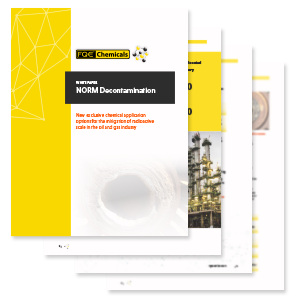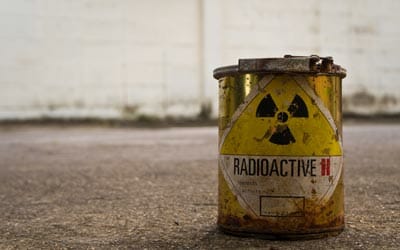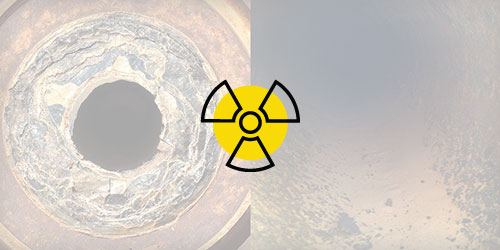VIDEO PRESENTATION – 10:00 mintues
Risks and Accumulation Points for Radioactive NORM Foulant in an Ethylene Plant
Originally presented at the AIChe Virtual Spring Meeting on Thursday, August 20, 2020
Contact Us
Naturally occurring radioactive materials (NORM) are found in the earth’s crust in ppm levels, and the decay of these unstable radioactive elements produces other radionuclides.
During the hydrocarbon recovery process, these subterranean radionuclides become mobile and flow with the oil, gas, and water mixture to surface; eventually finding its way into the ethylene process equipment.
NORM materializes in the form of radon gas and deposits of mineral scales from the sparingly-soluble salts. Since radon has a lack of water solubility and boiling point similar to propane, it materializes in the de-ethanizer. The decay of radon gas also forms thin films on interior surfaces of gas processing equipment, piping, and vessels. The mineral scale is typically sulphate scale (BaSO4 & SrSO4) and carbonate (CaCO3).
Radium has similarities to barium, strontium and calcium and other alkaline earth metals in group 2. Because of the similarities, radium co-precipitates with the other scale to form radium sulphate, radium carbonate, and in some cases radium silicate. This precipitation leads to accumulation that not only leads to processing problems (reduced flow, increased pressure, poor heat transfer), but also may pose health and safety risks due to the elevated levels of radioactivity.




